Reptile & Amphibian
News Blog
Keep up with news and features of interest to the reptile and amphibian community on the kingsnake.com blog. We cover breaking stories from the mainstream and scientific media, user-submitted photos and videos, and feature articles and photos by Jeff Barringer, Richard Bartlett, and other herpetologists and herpetoculturists.
Monday, October 7 2013
Check out this video "Het albino X Sunglow Litter," submitted by kingsnake.com user robertmcphee.
Submit your own reptile & amphibian videos at http://www.kingsnake.com/video/ and you could see them featured here or check out all the videos submitted by other users!
This image of a Wild Utah Garter Snake, uploaded by kingsnake.com user Utahn, is our herp photo of the day!

Upload your own reptile and amphibian photos photos at gallery.kingsnake.com, and you could see them featured here!
Friday, October 4 2013
The little car bumped and thumped as we raced along a nearly dark forest road in North Carolina. Our destination was one of those many that appeared only a mile or so away on the map, but when you factored in the twists, turns, ups, and downs, bumps and thumps, it proved to be a good 30 minutes from our starting point.
Salamander was the name, and finding them was the game. The little salamanders that we sought were the red-legged and the red-cheeked variants of the Ocoee salamander, Desmognathus ocoee. These are harmless mimics, if you will, of the distasteful Jordan’s salamander complex phases.
We finally sped into a parking area overlooking a deserted campground. And in the middle of the campground was a ring of sizable rocks and a dozen or more well charred log sections all topsy turvy atop a bed of ashes. I spent some time flipping logs and rocks in the surrounding woodlands. Kenny headed straight for the campsite. By the time I got to that area he had already found Red-legged Salamanders, Plethodon shermani, Blue Ridge Two-lined Salamanders, Eurycea wilderae, and several of the desired color variants of the Ocoee Salamander, Desmognathus ocoee.
But for us the best was yet to come. Beneath one log we found an Ocoee Salamander that rather than either/or was gaudily clad in red not only on the cheeks but on the legs as well. This was a variant that neither of us had been aware of.

Success, and now the long drive back to hustle and bustle of the peopled world.
More photos under the jump...
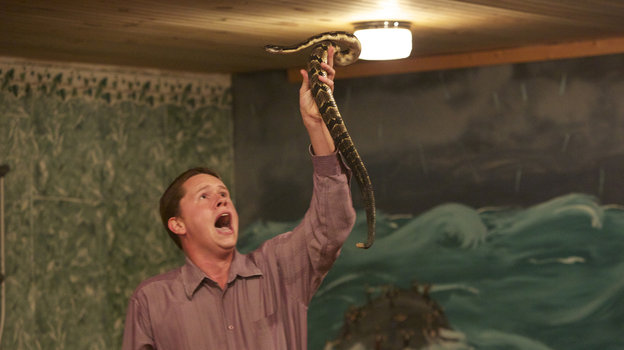 When we talk about "snake handling" here on kingsnake.com, we're not talking about religion. But today on National Public Radio, they are.
From NPR:
Worshiping with snakes dates back more than 100 years, but today, the major Pentecostal denominations denounce the practice.
There are an estimated 125 snake-handling churches scattered across Alabama, Georgia, the Carolinas and Appalachia, where the tradition is strongest. Snakes in church are against the law everywhere but West Virginia, though in most states it's a misdemeanor offense the authorities don't bother with.
[...]
There are the five signs often practiced in snake handling churches, including the sipping of poison such as strychnine or lye as a test of their faith.
[Pastor Jamie] Coots has been bitten nine times by venomous snakes. Each time he refused medical attention. Half of his right middle finger is gone as a result of a fang from a yellow rattler. In 1995, a woman who was bit in his church refused to go to the hospital; she died on Coots' couch while they prayed over her.
Such is the conviction of his belief that Coots has agreed not to call EMS if [his son] Little Cody is bitten. "He has been bit five times by cottonmouths, and he has already told me, 'Dad, I'll never go to a doctor,' " says his father.
Read and listen to the rest of the story here.
Photo: NPR
This image of a Ball Python, uploaded by kingsnake.com user smann, is our herp photo of the day!

Upload your own reptile and amphibian photos photos at gallery.kingsnake.com, and you could see them featured here!
Thursday, October 3 2013
 Veterinary Practice News
Veterinary Practice News is reporting that reptile and exotic animal vet, author, and longtime kingsnake.com community member Dr. Kevin Wright passed away unexpectedly Sept. 26 after a brief illness. He was 50 years old.
Dr. Wright was a prolific writer on reptile and amphibian subjects, contributing over 300 articles to Reptiles magazine and other publications over the years, and was an original board member with the Association of Reptilian and Amphibian Veterinarians.
A 1988 graduate of the University of Florida College of Veterinary Medicine, Dr. Wright was co-author of the 2001 manual "Amphibian Medicine and Captive Husbandry." His career included work at zoos in Philadelphia, Miami, Phoenix, and Washington, D.C., and he owned Wright Bird and Exotic Pet House Calls, a mobile practice based in Mesa, Ariz.
He is survived by his wife, Marlene.
For more information, read the article on the Veterinary Practice News website.
This image of an East African Gaboon, uploaded by kingsnake.com user reptilelocators, is our herp photo of the day!

Upload your own reptile and amphibian photos photos at gallery.kingsnake.com, and you could see them featured here!
Wednesday, October 2 2013
 Cancer: It's a word no one wants to hear. Especially when it happens to a family member.
As many members of the East Texas Herpetelogical Society (ETHS) in Houston know, a longtime member of their family and the herp community, Nathan Wells, has been fighting a battle with cancer since first diagnosed in the summer of 2012.
Nathan kept friends and family up to date with his battle throughout the year, posting updates of his fight from hospital bed describing his treatments and procedures, until he beat his cancer.
But as any cop will tell you, you may beat the ticket, but you never beat the ride.
Even with medical insurance, a long cancer fight is an expensive battle, one that continues long after the illness has passed, and Nathan and his family have been left with a pile of medical bills.
His family at ETHS pitched in during their 23rd Annual Conference and Breeders Expo over the weekend, and held a fundraiser with a goal of raising $10,000 for Nathan's medical expenses. They continue to take donations on his behalf.
Nathan's story, a story that can happen to any one of us, is detailed on the ETHS website this month. To read more about one herper's incredible fight against cancer and for details on how to donate to his medical expense fund, click here.
This image of a Frog, uploaded by kingsnake.com user davemangham, is our herp photo of the day!

Upload your own reptile and amphibian photos photos at gallery.kingsnake.com, and you could see them featured here!
Tuesday, October 1 2013
Nine baby ocellate mountain vipers ( Vipera wagneri) are helping their species stay off the brink of extinction, thanks to the efforts of the St. Louis Zoo.
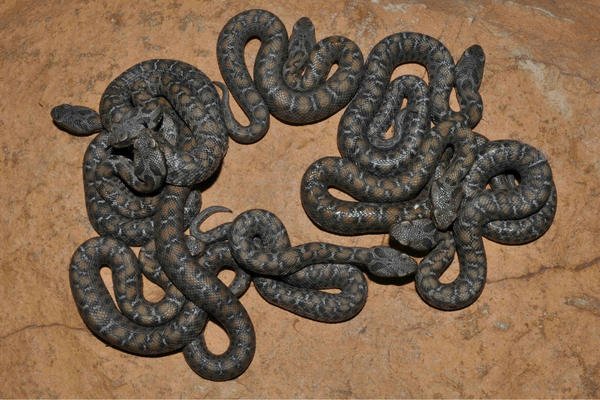
From Scientific American:
In 2009, with populations down at least 80 percent and a new dam on the Aras River threatening to destroy a large portion of the snake’s habitat, the International Union for Conservation of Nature listed the ocellate mountain viper as “critically endangered.”
[...] The Saint Louis Zoo coordinates a Species Survival Plan (based on the programs created by the American Association of Zoos and Aquariums) for the ocellate mountain viper, which includes a cooperative breeding program among several zoos. There aren’t many zoos that hold these snakes, though. Saint Louis is one of only three in the U.S. with the species in their collections, and they have the majority: Including the nine snakes born on August 16, Saint Louis Zoo has 23 of the 28 ocellate mountain vipers in the U.S.
The snakes are considered critically endangered in the wild. Read the full story here.
Photo: Mark Wanner, Saint Louis Zoo
If you take the time to look back into the nomenclatural history of the northern leopard frog, Rana pipiens, you will note at least two names that were long ago hidden in synonomy.
Both were of northern populations, Minnesota and Wisconsin to be specific and I found both to be just different enough from a typical northern leopard frog to be of interest.
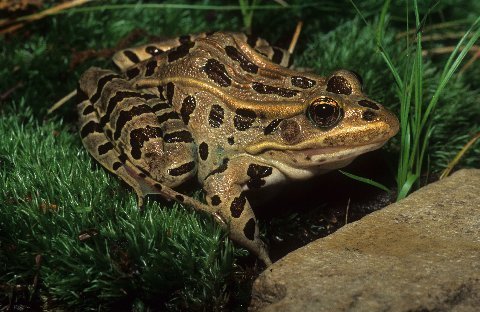
One variant, Rana pipiens burnsi by name, was nearly devoid of the oval leopard spots that typify the species.

This image of Anacondas, uploaded by kingsnake.com user mjf, is our herp photo of the day!

Upload your own reptile and amphibian photos photos at gallery.kingsnake.com, and you could see them featured here!
Monday, September 30 2013
Check out this video "Egyptian Uromastyx," submitted by kingsnake.com user stingray.
Submit your own reptile & amphibian videos at http://www.kingsnake.com/video/ and you could see them featured here or check out all the videos submitted by other users!
This image of a Crested Gecko, uploaded by kingsnake.com user LSU_Tigress, is our herp photo of the day!

Upload your own reptile and amphibian photos photos at gallery.kingsnake.com, and you could see them featured here!
Friday, September 27 2013
This image of a Chameleon, uploaded by kingsnake.com user ToucanJungle, is our herp photo of the day!

Upload your own reptile and amphibian photos photos at gallery.kingsnake.com, and you could see them featured here!
We're always happy to see the media grasping that "venomous" and "poisonous" don't mean the same thing. For your Friday viewing pleasure, stop by io9.com and check out some of the world's coolest venomous crittters!
 Photo from the kingsnake.com photo gallery: BakerReptiles
Photo from the kingsnake.com photo gallery: BakerReptiles
Thursday, September 26 2013
The little dugout angled out of the river and approached our dock. In it sat a villager holding something at bay with one paddle while deftly maneuvering with another.
Mike Pingleton was closest, and even before the boat touched shore, he was excited. And well he should have been, for unlike one of the more common snakes the villagers usually bring us, on the bottom of the boat was a two foot long creature clad in scales of tan that were arranged in annuli.
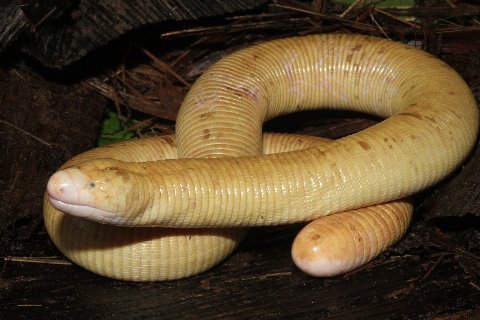
The villager lifted the creature gently on a paddle, and Mike soon had it in hand. About the diameter of a thumb, we were all soon staring intently at a fairly common but seldom seen, legless, burrower, a Giant Worm lizard (more correctly a Giant Amphisbaenid), Amphisbaena alba.
Besides lacking limbs, this intriguing creature lacks functional eyes. The scalation is arranged in prominent rings that give it the superficial appearance of a gigantic earthworm.
To many of us, the appearance of this very specialized lizard-like animal was the high point of the trip.
More photos under the jump...
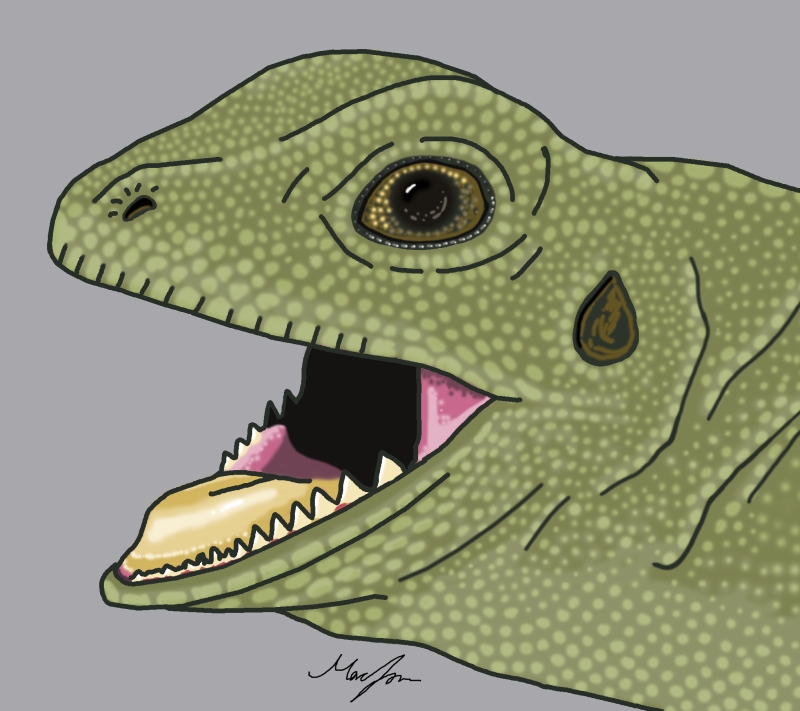 Before the age of the dinosaurs, a mass extinction event occurred that destroyed 70 percent of all terrestrial vertebrate species and almost all aquatic species. It took as long as 10 million years for life on earth to recover from what is now known as the end-Permian extinction event.
After that recovery but before the rise of the dinosaurs, the ancestors of modern lizards and snakes emerged.
From the University College London:
Two new fossil jaws discovered in Vellberg, Germany provide the first direct evidence that the ancestors of lizards, snakes and tuatara (known collectively as lepidosaurs), were alive during the Middle Triassic period – around 240 million years ago.
The new fossil finds predate all other lepidosaur records by 12 million years. The findings are published in BMC Evolutionary Biology.
The international team of scientists who dated the fossil jaws have provided evidence that lepidosaurs first appeared after the end-Permian mass extinction event, a period when fauna began to recover and thrive in the more humid climate.

Lead author Dr Marc Jones, who conducted the research at UCL, explained: "The Middle Triassic represents a time when the world has recovered from the Permian mass extinction but is not yet dominated by dinosaurs. This is also when familiar groups, such as frogs and lizards, may have first appeared."
The small teeth and lightly built jaws suggest that the extinct animal preyed on small insects. The new fossils are most closely related to the tuatara, a lizard-like reptile.
[...]
The new fossil jaws can improve molecular dating estimates of when reptiles began to diversify into snakes, lizard and tuatara, and when the first modern lizards inhabited the earth. Previous estimates have varied over a range of 64 million years and the team are keen to help narrow this down.
"Some previous estimates based on molecular data suggested that lizards first evolved 290 million years ago," said second author Cajsa Lisa Anderson, University of Gothenburg. "To a palaeontologist this seems way too old and our revised molecular analysis agrees with the fossils."
Revised molecular dating in light of this new fossil find now suggests lizards began to diversify into most of the modern groups we recognise today, such as geckos and skinks, less than 150 million years ago in the Cretaceous period, following continental fragmentation.
Read more here.
Photos: Marc Jones/UCL
This image of a Gray Banded Kingsnake, uploaded by kingsnake.com user jcherry, is our herp photo of the day!

Upload your own reptile and amphibian photos photos at gallery.kingsnake.com, and you could see them featured here!
Wednesday, September 25 2013
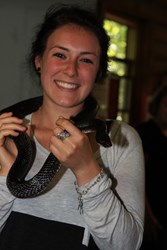 Some programs to help troubled young people have seen improvement in school and interpersonal relationships after the children and teens have worked with dogs or horses. Now snakes and other "misunderstood animals" can be added to that list.
From Trails Carolina:
Studies have shown that animal assisted therapy and relationships with animal companions in general provide an improvement in physical, emotional and psychological well-being. Trails advanced this research by building a curriculum where students interact and engage with misunderstood animals and parallel this experience to their own.
“We learned as children to hate snakes, turtles, possums and the like and we’ve been taught that they’re bad,” says Steve O’Neil, Trails’ Ecology Expert. “Most of our students come in with a lot of fear and within minutes they’re holding a snake. Overcoming their fear and misconceptions about these animals also helps our students see themselves in a different light.”
Similar to these animals, the troubled youth of Trails are facing their own misunderstandings of the world and how people perceive them. By gaining a better understanding of the ecological value of these misunderstood animals students gain a better understanding of their own value and how their behaviors and actions are often misunderstood. This curriculum helps students build confidence in themselves and better understand how to communicate with others.
Read more here.
By
Wed, September 25 2013 at 05:52
I have struggled with hatching Gray-banded Kingsnake ( Lampropeltis alterna) eggs for the past 34 years. Just when I feel I have it figured out, I have major catastrophes occur such as babies dying full-term in the shell, severely kinked babies, and babies not absorbing their yolk sacs.
I have tried vermiculite, paper towels, sand/peat moss mixes, and peat moss to varying degrees of success. Lately, I have been using peat moss employing the following strategy.
First, I use peat moss soaked in spring water for about fifteen minutes. I then squeeze out as much water as possible and “fluff” up the moss. I place the eggs either on top or in the middle of my peat moss in a half-gallon plastic jar with a tiny hole at the top. Then I place the jar in my incubator set at approximately 78 °F (25 °C).
I find the results to be similar if I have the eggs on top or sandwiched in the middle of the moss. Using this strategy, I hatch out MOST of my fertile L. alterna eggs; I still have some die full term in the shell or with severe kinks; however, most of my babies come out fine.
Feel free to describe your strategies to successful egg incubation!
Figure 1. The buried approach. All seven of these eggs hatched with no problems:

More photos under the jump...
This image of a Ball Python, uploaded by kingsnake.com user draybar, is our herp photo of the day!

Upload your own reptile and amphibian photos photos at gallery.kingsnake.com, and you could see them featured here!
Tuesday, September 24 2013
 Noted California herpetologist and author of many popular reptile and amphibian field guides used by amateur and professional herpetologists alike, Robert C. Stebbins passed away yesterday at the age of 98.
Born on March 31, 1915, in Chico, California, the first of seven children, his work with reptiles and amphibans on the west coast has been described as "what the Oxford English Dictionary is to lexicographers" and includes such noted works as;
- Amphibians of Western North America (UC Press, 1951)
- Amphibians and Reptiles of Western North America (McGraw-Hill Press, 1954)
- Reptiles and Amphibians of the San Francisco Bay Region (UC Press, 1960)
- A Field Guide to Western Reptiles and Amphibians (Houghton-Mifflin Co., 1966)
- Amphibians and Reptiles of California (UC Press, 1972)
- A Field Guide to Western Reptiles and Amphibians, 2nd edition (Houghton-Mifflin Co., 1985)
- A Field Guide to Western Reptiles and Amphibians, 3rd edition (Houghton-Mifflin Co., 2003)
- Field Guide to Amphibians and Reptiles of California, revised edition (w/ Samuel M. McGinnis; UC Press, 2012)
Incredibly, even though retired and well in his 90s, Robert Stebbins was still working, releasing an updated Field Guide to Amphibians and Reptiles of California just last year.
To read more about Robert Stebbins and his work, click here for more from the (bio)accumulation web site .
How could this be? Was I delusional? We were treading a narrow trail through old secondary rainforest in Amazonian Peru, not in southeast Asia, the bailiwick of the green water dragon.
We were out late. It was after midnight. And there, sleeping soundly on a supple limb at face height, was a foot long green lizard that looked an awful lot like the dragon with which I was so familiar. Big angular head, somewhat stocky body and tapering tail. Vertebral crest, sturdy legs.
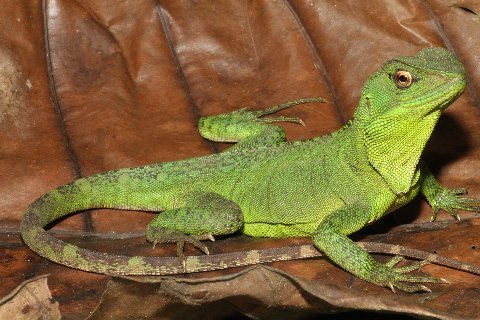
As I photographed the sleeping lizard I was doing an extensive memory search and finally, as a default, came up with the hoplocercine genus Enyalioides, the forest dragons. And following through on the thought process led me eventually to the Amazon Forest Dragon, E. laticeps.
This was exciting, for I had never seen one in the wild. I could now count this as a lifer on my ever growing life-list.
More photos under the jump...
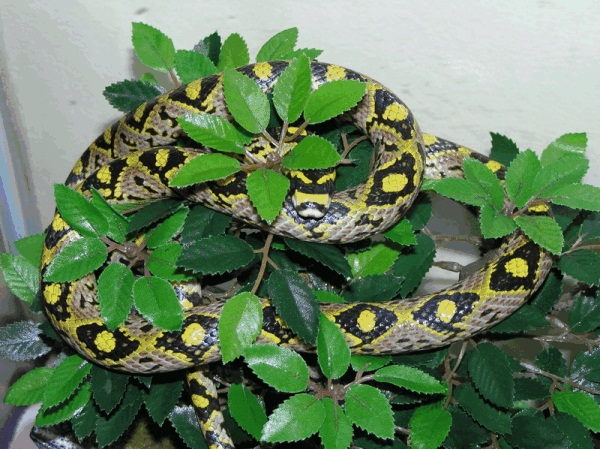 A teeny tiny little Mandarin rat snake grounded a Qantas Boeing 747 in Sydney last weekend.
From ABC News:
Staff found the 20-centimeter (8-inch) Mandarin Rat Snake in the passenger cabin near the door late Sunday before passengers were due to board the flight bound for Tokyo from Sydney International Airport, Qantas said in a statement.
Australia's flagship airline said passengers were given hotel rooms overnight and left Sydney on a replacement plane Monday morning. Qantas said the original jet would be fumigated before returning to service in case there were other snakes on board.
The snake was taken by quarantine officials for analysis.
The Agriculture Department said the snake, a species that grows to an average 1.2 meters (4 feet), had been euthanized, "as exotic reptiles of this kind can harbor pests and diseases not present in Australia."
Read the full story here.
Photo: kingsnake.com user mattroconnor
This image of a Asian Vine Snake, uploaded by kingsnake.com user apophis, is our herp photo of the day!

Upload your own reptile and amphibian photos photos at gallery.kingsnake.com, and you could see them featured here!
Monday, September 23 2013
Check out this video "Anoles in My Garden," submitted by kingsnake.com user clintg.
Submit your own reptile & amphibian videos at http://www.kingsnake.com/video/ and you could see them featured here or check out all the videos submitted by other users!
This image of a Radiated Tortoise hatching, uploaded by kingsnake.com user marcp, is our herp photo of the day!

Upload your own reptile and amphibian photos photos at gallery.kingsnake.com, and you could see them featured here!
Friday, September 20 2013
One by one we have found and photographed over 130 species of herps on Madre Selva Biological Preserve. The Preserve is located on the banks of Peru’s Rio Orosa, a few dozen miles upriver from its confluence with the mighty Rio Amazonas.
But there is one species, a hallmark of Amazonian reptiles, that continues to elude our wandering gazes. This is the Basin form of the Emerald Tree Boa, Corallus batesi.
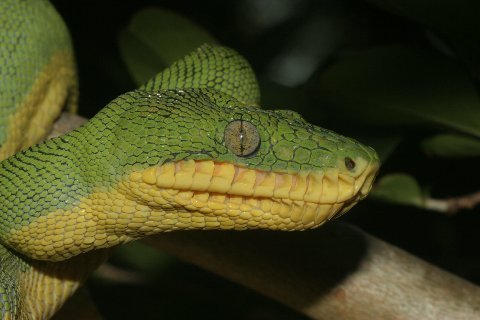
We are elated when this magnificent snake is found one river up or down Amazon from the preserve and we then renew our efforts to find it. The intensive searches, by day, by night, in fair weather and foul, have probably led to our finding of more than a dozen other elusive species, and for this we are grateful. But it would be so very nice to be able to add an emerald to the ever-burgeoning list.
During January of 2014 (the normally rainy Amazon summer—it’s in the southern hemisphere) we will be trying again. Wish us luck. Or come on down and join us!
More photos under the jump...
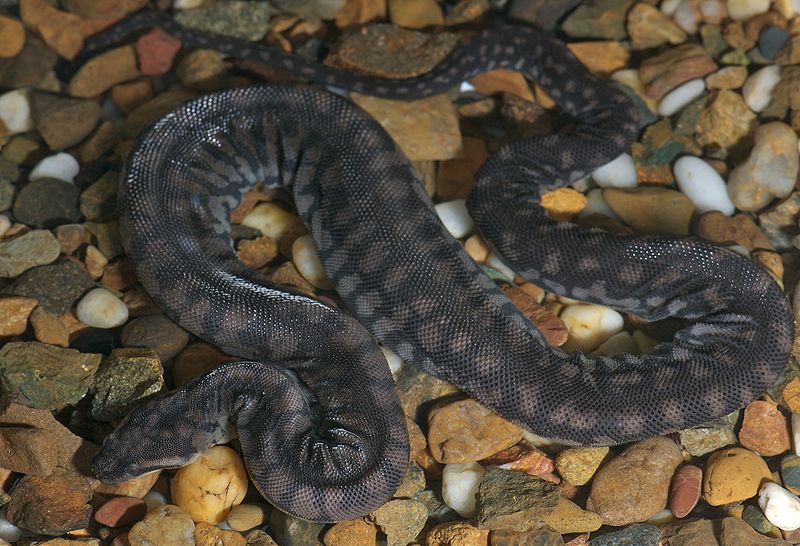 It's not often a veterinarian who writes about pets for a mainstream newspaper devotes an entire column not just to a pet snake, but a species that's not kept as a pet all that often. But Modesto, Calif., veterinarian Dr. Jeff Kahler did just that in a recent piece in the Modesto Bee, where he recounted the story of a wart snake brought to his practice because his eyes had clouded over.
From the article:
Bando is a 3-year-old, 6 1/2-foot snake - and not just any kind of snake. He is a wart snake or sometimes called elephant trunk snake. Bando's caretaker, Randy, has had Bando for two years, having purchased him from a California reptile dealer.
He is housed in an aquarium that is temperature-controlled and aquatic. Bando spends almost all of his time in the water, including feeding time. His diet consists of goldfish and he is feed once a week. Randy reports that Bando has had no problems in the past two years but recently appears to have developed an issue with his eyes.
Over the past few weeks, Bando's eyes have become more and more opaque. They are now to the point where Randy suspects Bando cannot see.
Initially Randy thought Bando's eyes were clouding over as they normally do right before he sheds his skin but even after a shed occurred, the opacity in Bando's eyes remained. Randy has yet to find a veterinarian to examine Bando so he took to the internet and eventually got me involved.
To understand what might be going on with Bando's eyes, it helps to understand a bit about the natural history of his species. For you aficionados, wart snakes belong to the genus Acrochordus, which includes three species of snakes. I suspect Bando is a Java wart snake because of his large size.
These snakes are native to parts of southeast Asia and spend most of their time in water. Their diet consists of aquatic life --- especially fish --- and they have a rough scale pattern, which aids in gripping fish as they coil around them when eating. In my clinical experience, these are very rare snakes in captivity. I personally have only worked with them in zoo collections.
There are many possibilities that could cause Bando's eye issues. But it is my suspicion that Bando's eye problem is directly related to his captive environment and, more specifically, the water he is kept in.
Click here to find out what's wrong with Bando!
Photo: Smacdonald at en.wikipedia, licensed under the Creative Commons Attribution-Share Alike 3.0 Unported license.
|



